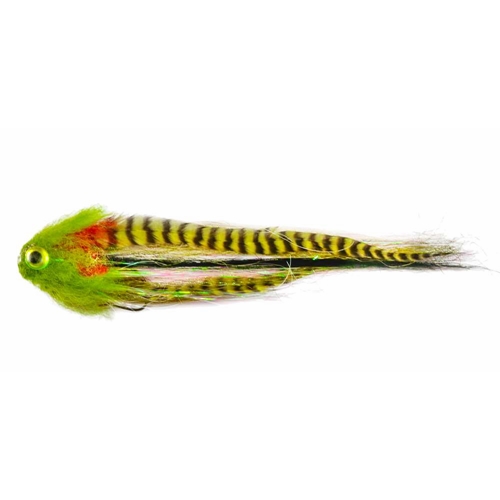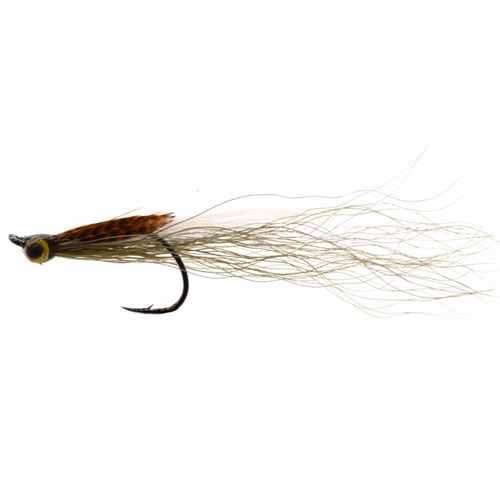Czech Nymphing Technique
The czech nymphing technique is today considered to be pretty much a standard - an essential part of every grayling anglers techiques. Firstly, let's take a look at the flies, the Czech nymph has many variations, but all are based upon one simple design, using a heavily-leaded hook. They are intended to be fished very deep, in fast water, weight & a slim profile are important.
Some Czech Nymph Flies
Czech Nymphing Technique Tactics
The water will be fast water, normally considered un-fishable on the fly, probably 18" - 3' deep (sometimes much deeper). You'll want to get your czech nymph flies as near to the bottom as possible. Do not fish with more than about 3-4' of flyline outside the tip ring. This is difficult to do, as the fly fisherman's natural tendency is to shoot a bit of line. The technique is extremely short range fishing, fish will be close to your rod!
 Do not cast conventionally, there is not enough line & the nymphs are far too heavy - the nymphs that provide the casting weight. Use a flicking action to throw the nymphs upstream at an angle of about 30 degrees. Done correctly, the 'flick cast' will extend the leader so that the nymphs lie in a straight line upstream. They will immediately start to sink rapidly as the current brings the flies back down towards you. To stay in touch with the flies, don't retrieve any line, just track round with the rod, raising & lowering the tip as appropriate. Watch your indicator very closely! Any hesitation, draw, stutter, check - strike it immediately. Because of the fast nature of the water grayling and trout will have little chance to closely examine the fly and hit quickly.
Do not cast conventionally, there is not enough line & the nymphs are far too heavy - the nymphs that provide the casting weight. Use a flicking action to throw the nymphs upstream at an angle of about 30 degrees. Done correctly, the 'flick cast' will extend the leader so that the nymphs lie in a straight line upstream. They will immediately start to sink rapidly as the current brings the flies back down towards you. To stay in touch with the flies, don't retrieve any line, just track round with the rod, raising & lowering the tip as appropriate. Watch your indicator very closely! Any hesitation, draw, stutter, check - strike it immediately. Because of the fast nature of the water grayling and trout will have little chance to closely examine the fly and hit quickly.
Fan cast the water ahead of you and, if no action, take a pace or two upstream & repeat. This is fast fishing, each cast is fished out in 5-10 seconds and you're straight into the next one, a lightweight rod helps the weary arms. Often it is often useful to let the flies come down below you and allow them to fish for a few moments as they come round the bend and onto 'the dangle'. Keep the rod tip above the indicator & steadily 'lean' downstream, dropping the tip as you do so. This can be a particularly effective tactic, taking one or two more fish out of water that has already been worked. Obviously, with this technique you do not need to restrict yourself to traditional Czech nymphs. The key is to use heavily-weighted flies, so goldheads, caddis will do just as well. 'Matching the hatch' is not a priority with this fishing! This is an active searching method and, as such, technique is more important than specific pattern.
Summary
The water will be fast water, normally considered to fast on the fly, You'll want to get your nymphs as near to the bottom as possible. So try the following:
- Do not fish with more than about 3-4' of fly line outside the tip ring. This is difficult to do, as the fly fisherman's natural tendency is to shoot a bit of line. This is extremely short range fishing, fish will be close to your rod!
- Do not cast conventionally, there is not enough line & the nymphs are far too heavy - the nymphs that provide the casting weight. Use a flicking action to throw the nymphs upstream at an angle of about 30 degrees. Done correctly, the 'flick cast' will extend the leader so that the nymphs lie in a straight line upstream.
- The nymphs will immediately start to sink rapidly as the current brings the flies back down towards you.
- To stay in touch with the nymphs, don't retrieve any line, just track round with the rod, raising & lowering the tip as appropriate.
- Watch your indicator very closely! Any hesitation, draw, stutter, check - strike it immediately.
- Because of the fast nature of the water grayling and trout will have little chance to closely examine the fly and hit quickly. Fan cast the water ahead of you and, if no action, take a pace or two upstream & repeat.
This is fast fishing, each cast is fished out in 5-10 seconds and you're straight into the next one, a lightweight fly rod helps the weary arms. Often it is often useful to let the flies come down below you and allow them to fish for a few moments as they come round the bend and onto 'the dangle'. Keep the rod tip above the indicator & steadily 'lean' downstream, dropping the tip as you do so. This can be a particularly effective tactic, taking one or two more fish out of water that has already been worked. Obviously, with this technique you do not need to restrict yourself to these specifically designed flies use heavyweight flies including beadhead nymphs and tungsten nymphs.
Recommended Tackle
A 5 or 6-weight rod will be sufficient, 9' to 10' is ideal for better control of the flies when nymphing. Your Leader should be of about 9' in length, NOT tapered as they are counter-productive as tapered leader won't sink quickly enough we use Stroft ABR mono which is used by many top anglers . Just use something like 6lb down to the top dropper, with 4lb from there down. Use two 5-6" droppers, one about 18" above the point fly, the other about 18" above that.
The true method is to fish the heaviest fly on the top dropper, so that it helps carry the other flies down to the correct level. To help ensure rapid sinking of the flies, degrease the leader. You will be looking for takes on the end of the fly line, so depending on your eyesight you may wish to use some sort of bite indicator.

























